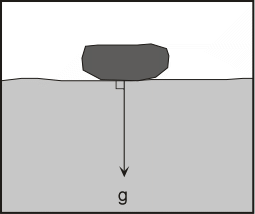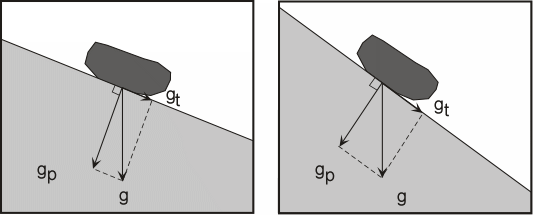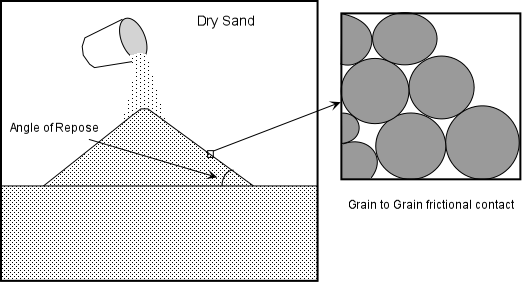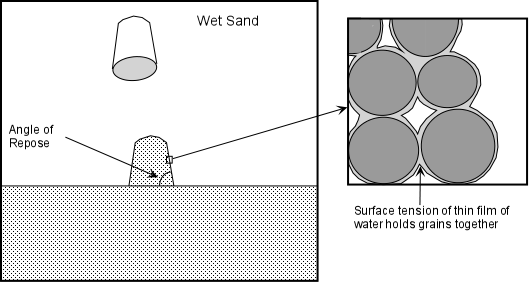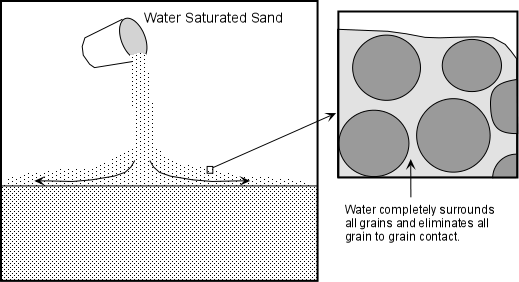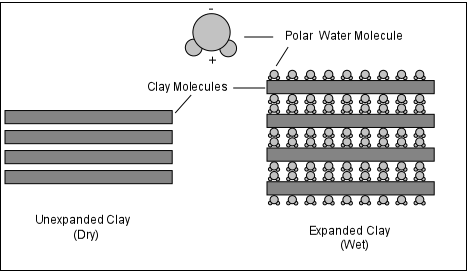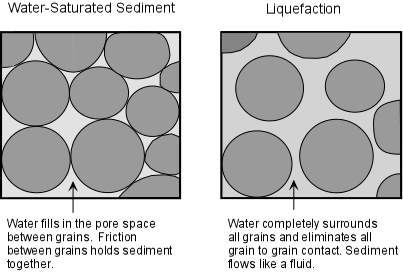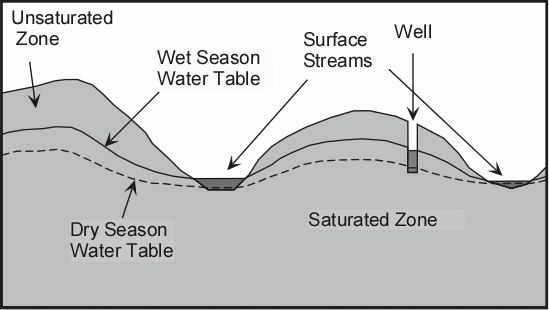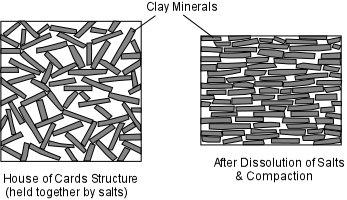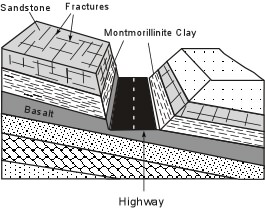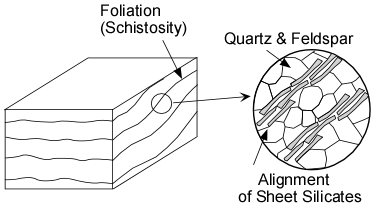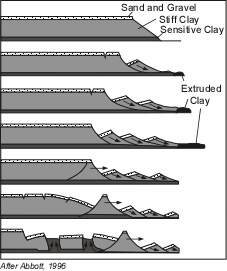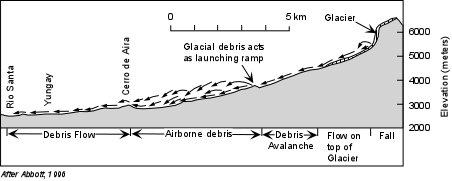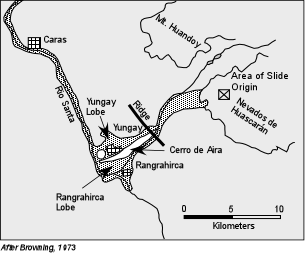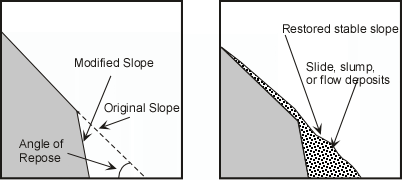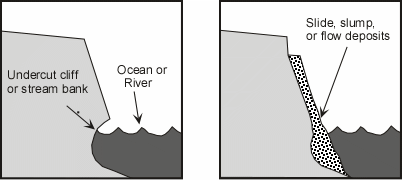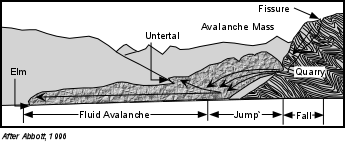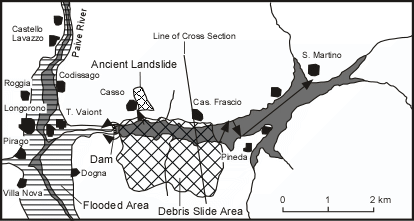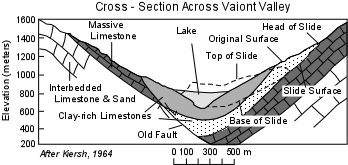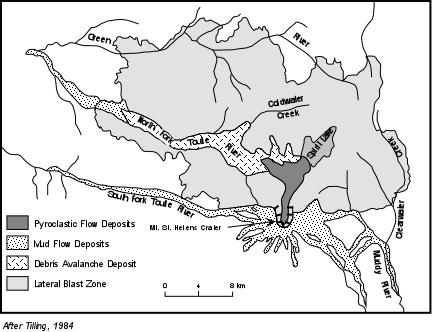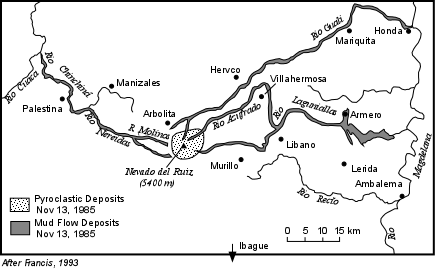Assessing and Mitigating Mass Movement Hazards
As we have seen
mass movement vents can be extremely hazardous and result in extensive loss of life and
property. But, in most cases, areas that are prone to such hazards can be recognized
with some geologic knowledge, slopes can be stabilized or avoided, and warning systems can
be put in place that can minimize such hazards.
Hazard Assessment
If we look at the case histories of mass movement disasters discussed above, in all
cases looking at the event in hindsight shows us that conditions were present that should
have told us that a hazardous condition existed prior to the event.
- Exploration could have revealed the sensitive clays beneath Turnagain Heights, located
in known earthquake prone area. The area is now a park.
- The area beneath the slopes of Nevados de Huascarán was littered with debris from prior
landslide events, and even thought the first event in 1962 was not caused by an
earthquake, it should have been known that the area was susceptible to such a
hazard. The 1962 event should have provided fair warning to inhabitants of the area
and the death and destruction caused by the 1970 event should have been avoided.
- Miners in Elm, Switzerland, certainly realized that undercutting of the mountain could
cause the mountain to fail, but did not consider the more widespread effect of the
avalanche.
- In the Portuguese Bend area, planners should have realized that the slope was an
earthflow, fine for farming, but not a very desirable place to construct houses of any
sort.
- In both of the volcanic mudflow cases, the hazards were known before the event. In
the Mount St. Helens case, hazards assessments were available and plans were in effect to
minimize further damage once the event occurred. In the case of Armero, warnings
were given, but ignored. The town was built on mudflow deposits from prior mudflow
events.
Because there is usually evidence in the form of distinctive deposits and geologic
structures left by recent mass movement events, it is possible, if resources are available,
to construct maps of all areas prone to possible mass movement hazards. See the USGS Landslide Hazards map of the U.
S. - http://landslides.usgs.gov/learning/nationalmap/. More detailed state and local maps can be found and most are available on the internet.
Planners can use such hazards maps to make
decisions about land use policies in such areas or, as will be discussed below, steps can
be taken to stabilize slopes to attempt to prevent a disaster.
Prediction
Short-term prediction of mass movement events is somewhat more problematical. For
earthquake triggered events, the same problems that are inherent in earthquake prediction
are present. Slope destabilization and undercutting triggered events require the
constant attention of those undertaking or observing the slopes, many of whom are not
educated in the problems inherent in such processes. Mass movement hazards from
volcanic eruptions can be predicted with the same degree of certainty that volcanic
eruptions can be predicted, but again, the threat has to be realized and warnings need to
be heeded. Hydrologic conditions such as heavy precipitation can be forecast with
some certainty, and warnings can be issued to areas that might be susceptible to
mass movement processes caused by such conditions. Still, it is difficult of know
exactly which hill slope of the millions that exist will be vulnerable to an event
triggered by heavy rainfall.
Some warning signs can be recognized individual by observations of things
around you:
- Springs, seeps, or saturated ground in areas that have not typically been wet before.
- New cracks or unusual bulges in the ground, street pavements or sidewalks.
- Soil moving away from foundations.
- Ancillary structures such as decks and patios tilting and/or moving relative to the main house.
- Tilting or cracking of concrete floors and foundations.
- Broken water lines and other underground utilities.
- Leaning telephone poles, trees, retaining walls or fences
- Offset fence lines.
- Sunken or down-dropped road beds.
- Rapid increase in creek water levels, possibly accompanied by increased turbidity (soil content).
- Sudden decrease in creek water levels though rain is still falling or just recently stopped.
- Sticking doors and windows, and visible open spaces indicating jambs and frames out of plumb.
- A faint rumbling sound that increases in volume is noticeable as the landslide nears.
- Unusual sounds, such as trees cracking or boulders knocking together, might indicate moving debris. (from USGS Landslide Hazards - http://landslides.usgs.gov/learning/prepare/)
Prevention and Mitigation
All slopes are susceptible to mass movement hazards if a triggering
event occurs. Thus, all slopes should be assessed for potential mass movement
hazards. Mass movement events can sometimes be avoided by employing engineering techniques
to make the slope more stable. Among them are:
- Steep slopes can be covered or sprayed with concrete covered with a wire mesh to prevent rock falls.
- Retaining walls could be built to stabilize a slope.
- If the slope is made of highly fractured rock, rock bolts may be emplaced to hold the slope together and prevent failure.
- Drainage pipes could be inserted into the slope to more easily allow water to get out
and avoid increases in fluid pressure, the possibility of liquefaction, or increased
weight due to the addition of water.
- Oversteepened slopes could be graded or terraced to reduce the slope to the natural angle of repose.
- In mountain valleys subject to mudflows, plans could be made to rapidly lower levels of
water in human-made reservoirs to catch and trap the mudflows.
Some slopes, however, cannot be stabilized. In these cases, humans should avoid
these areas or use them for purposes that will not increase susceptibility of lives or
property to mass movement hazards.
|
